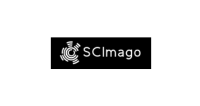Submissões
O cadastro no sistema e posterior acesso, por meio de login e senha, são obrigatórios para a submissão de trabalhos, bem como para acompanhar o processo editorial em curso. Acesso em uma conta existente ou Registrar uma nova conta.
Condições para submissão
Como parte do processo de submissão, os autores são obrigados a verificar a conformidade da submissão em relação a todos os itens listados a seguir. As submissões que não estiverem de acordo com as normas serão devolvidas aos autores.- Carregar o arquivo contendo o manuscrito com a indicação dos autores (página título inclusa) em formato <.doc> (Word ou similar).
-
Editar os metadados, considerando:
- Nome completo dos autores.
- Ordem correta de autores.
- Afiliação (Não abreviar).
- Cidade, estado e país.
- Título em inglês em caixa alta e em Português em itálito abaixo.
- Resumo e Abstract.
- Palavras-chave e Keywords.
- A seção escolhida para envio do trabalho deverá ser sempre "ARTIGOS" ou "Artigos de revisão", ficando a cargo do corpo editorial definir a seção no momento da publicação do trabalho. O trabalho no formato "Short-communication" também será aceito.
-
Indicar, pelo menos, três possíveis revisores:
Os revisores devem ser especialistas na área, preferencialmente doutores e sem conflitos de interesse para avaliar o manuscrito. Evite indicar revisores/as que sejam do mesmo grupo, da mesma instituição e do mesmo país.
Incluir:
- Nome completo
- Afiliação com link para currículo Lattes ou ORCID
- E-mail para contato
Na seção: Comentários para o editor.
Opinion article
Opinion article: concise and specific argument, clearly reflecting the idea of the text. 1500 words, no abstract, up to 8 references, up to 2 figures, up to 3 authors.Declaração de Direito Autoral
Autores que publicam nesta revista concordam com os seguintes termos:
- Autores mantém os direitos autorais e concedem à revista o direito de primeira publicação, com o trabalho simultaneamente licenciado sob a Creative Commons - Atribuição 4.0 Internacional que permite o compartilhamento do trabalho com reconhecimento da autoria e publicação inicial nesta revista.
- Autores têm autorização para assumir contratos adicionais separadamente, para distribuição não-exclusiva da versão do trabalho publicada nesta revista (ex.: publicar em repositório institucional ou como capítulo de livro), com reconhecimento de autoria e publicação inicial nesta revista.
- Autores têm permissão e são estimulados a publicar e distribuir seu trabalho online (ex.: em repositórios institucionais ou na sua página pessoal) a qualquer ponto antes ou durante o processo editorial, já que isso pode gerar alterações produtivas, bem como aumentar o impacto e a citação do trabalho publicado.
Política de Privacidade
Os nomes e endereços de e-mail neste site serão usados exclusivamente para os propósitos da revista, não estando disponíveis para outros fins.
Consulte nossos documentos e políticas institucionais para mais informações em: https://ufpr.br/lgpd/documentos/













